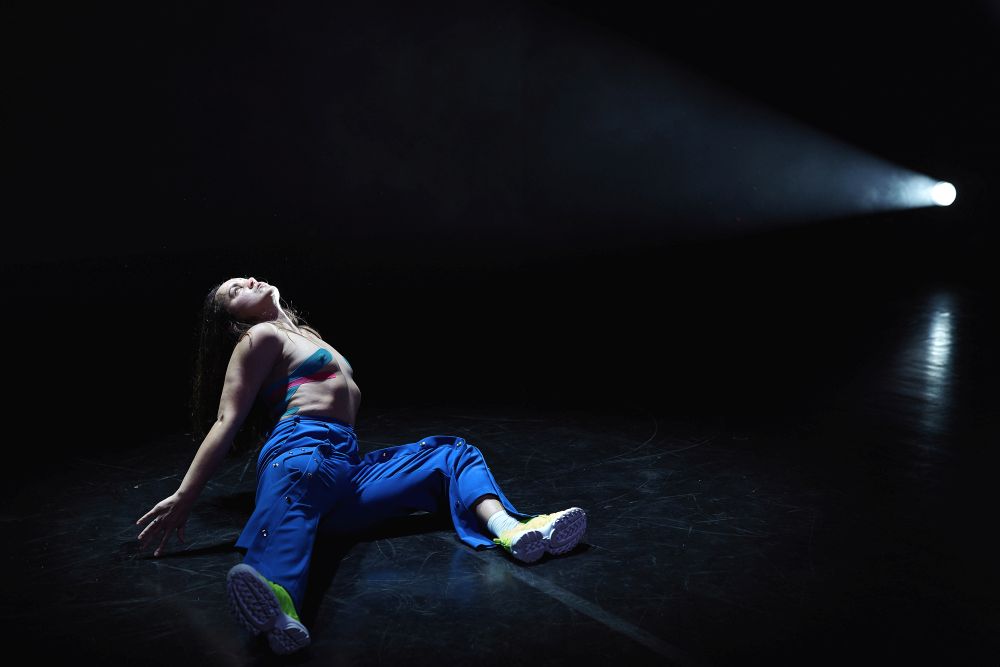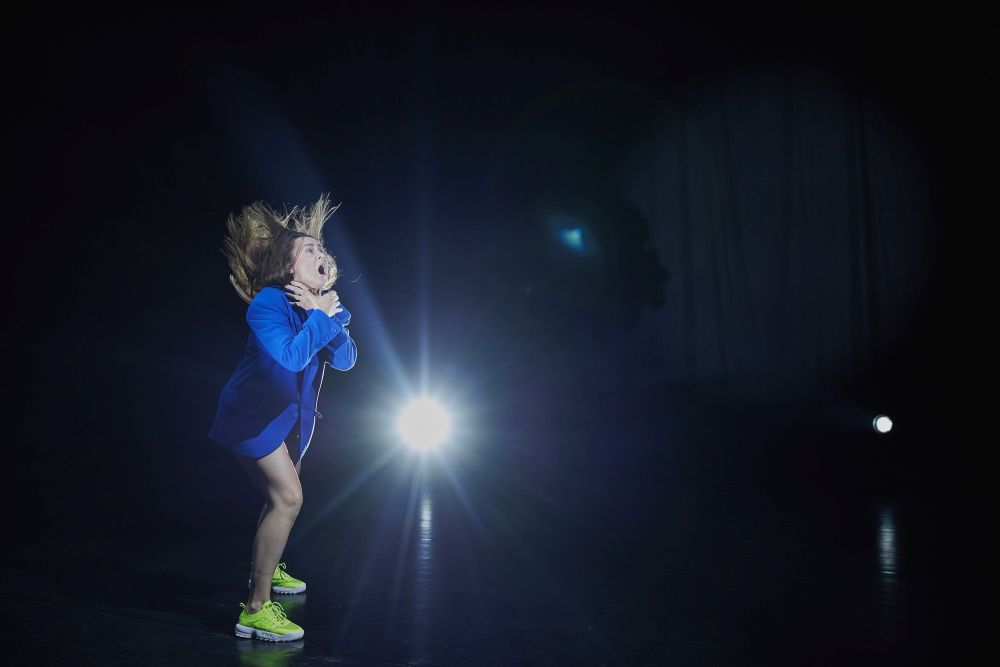
 Gallery
Gallery
Agon [Greek. Agṓn ‘conflict’, ‘fight’] – term used by the ancient Greeks for a situation in which sides dis - puted in order to show their superiority over the opponent, or, alternatively, the superiority of their arguments. The term was also used for a type of festival in honour of a god or a hero. Agon is a choreographic monodrama. Dominka Knapik returns onto the stage as a performer to talk about jobs “for a lifetime”: that of an artist and of a mother. At the same time she stands and fights with her own biography of a workaholic choreographer who struggles with the eternal sense of guilt a busy mother feels in relation to her child. Her companion in this fight is an acute observer: Pytia the choreotherapist. Both artists work with highly perosnal material, which is detonated by the self-mocking form of a mockdocumentary (“fake documentary”). It results in distanced, embedded narrative which mirrors the performativity of representation: thanks to it the audience can move ahead into the artist’s future while at the same time going back in her biography. The effect is a critical, but humorous study of the sense of having an (artistic) career and combining it with moterhood.


Fot. Klaudyna Schubert

Fot. Klaudyna Schubert

Fot. Klaudyna Schubert

Fot. Klaudyna Schubert

Fot. Klaudyna Schubert

Fot. Klaudyna Schubert

Fot. Klaudyna Schubert

Fot. Klaudyna Schubert

Fot. Klaudyna Schubert

Fot. Klaudyna Schubert

Fot. Klaudyna Schubert

Fot. Klaudyna Schubert

Fot. Klaudyna Schubert

Fot. Klaudyna Schubert

Fot. Klaudyna Schubert

Fot. Klaudyna Schubert

Fot. Klaudyna Schubert

Fot. Klaudyna Schubert

Fot. Klaudyna Schubert

